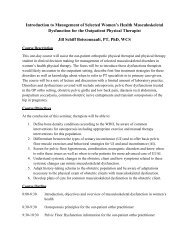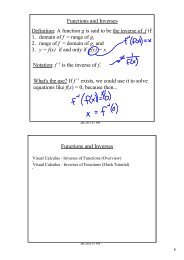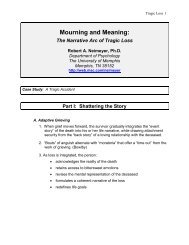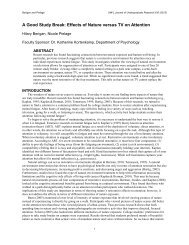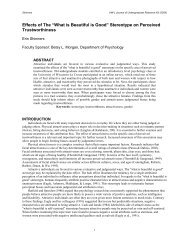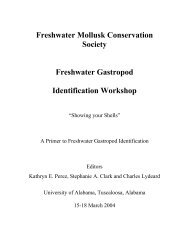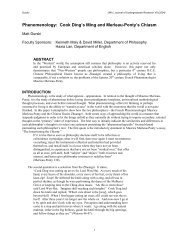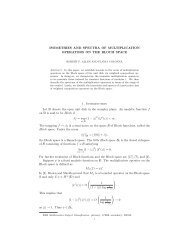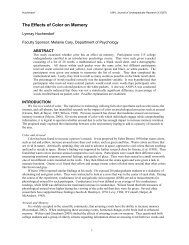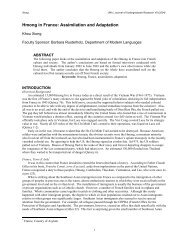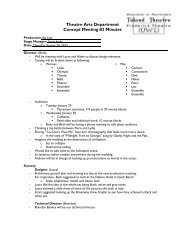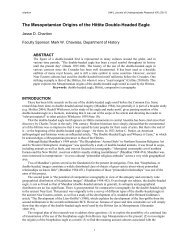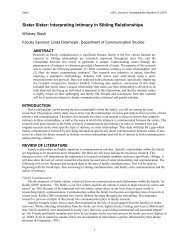A Guide for Terrestrial Gastropod Identification - University of ...
A Guide for Terrestrial Gastropod Identification - University of ...
A Guide for Terrestrial Gastropod Identification - University of ...
Create successful ePaper yourself
Turn your PDF publications into a flip-book with our unique Google optimized e-Paper software.
Diversity and higher-level systematics <strong>of</strong> land snails<br />
Solem (1978) estimated that there are some 20,500 land pulmonates world-wide, nearly<br />
twice the earlier estimate provided by Boss (1971). The focus <strong>of</strong> this workshop is on the<br />
terrestrial snails <strong>of</strong> the continental United States. Estimates <strong>of</strong> the number <strong>of</strong> the number <strong>of</strong> land<br />
snail species are available <strong>for</strong> several states and regions but accurate estimates <strong>for</strong> North America<br />
or even the U.S are hard to come by. A back <strong>of</strong> the envelope enumeration <strong>of</strong> the species listed in<br />
Turgeon et al. (1998) results in slightly less than 1100 native species in the U. S. and Canada,<br />
with about 70 more non-native species. The increasing problem <strong>of</strong> invasive, non-native species<br />
emphasizes the importance <strong>of</strong> recognizing all taxa at least at a basic level, and some ef<strong>for</strong>t should<br />
be made to become familiar with these groups. The terrestrial snails were traditionally placed in<br />
two large groups, the Prosobranchia, which has been discarded, and the Pulmonata, which has<br />
been retained. The majority <strong>of</strong> the native land snails in the United States are placed within the<br />
latter group. In most recent classifications, the Pulmonata is further divided into three major<br />
lineages, the Basomatophora, Systellommatophora, and Stylommatophora based on the number<br />
and kind <strong>of</strong> cephalic tentacles and the location <strong>of</strong> eyes on the head. In the Basomatophora, one<br />
pair <strong>of</strong> contractile tentacles (they shrink, accordion-like) is present on the head and the eyes are<br />
located at their base. In the Systellommatophora, the head has two pairs <strong>of</strong> contractile tentacles,<br />
with eyes on tips <strong>of</strong> the upper pair. Lastly, the Stylommatophora also have two pairs <strong>of</strong><br />
tentacles, with eyes on tips <strong>of</strong> the upper pair, but in this case the tentacles are retractile (they can<br />
be inverted, like the fingers <strong>of</strong> a glove).<br />
The Stylommatophora was traditionally divided into four subgroups, the Orthurethra,<br />
Mesurethra, Heterurethra, and Sigmurethra, based on the position and structure <strong>of</strong> the kidney and<br />
ureter (Pilsbry, 1900; Baker, 1955). Of these groups only the Orthurethra has remained<br />
consistently supported (e.g. Wade et al, 2001; 2006) and based on the most comprehensive<br />
modern analyses the stylommatophorans are divided into two groups, a smaller achatinoid clade<br />
and a much larger non-achatinoid clade. Traditionally, the majority <strong>of</strong> land snail species were<br />
placed in the Sigmurethra, and this group was further divided into two groups, the Holopoda and<br />
the Aulacopoda based on the morphology and placement <strong>of</strong> pedal grooves (Pilsbry, 1896; 1900).<br />
In recent phylogenetic reconstructions, the achatinoid clade includes only holopod species,<br />
whereas the non-achatinoid clade includes holopods and aulacopods.<br />
To a casual observer the revisions to the classifications <strong>of</strong> terrestrial snails based on<br />
recent phylogenetic analyses have apparently only resulted in the reshuffling <strong>of</strong> some taxa and<br />
the loss <strong>of</strong> several named groups to wit: most land snails are pulmonates, most pulmonates are<br />
stylommatophorans, and the majority <strong>of</strong> stylommatophorans are grouped together in a large nonachatinoid<br />
clade. What is not readily apparent is that these new hypotheses in<strong>for</strong>m us about the<br />
way organisms evolve and how some characters that at first appear to be similar due to common<br />
ancestry are actually derived independently. To fully appreciate the full potential that land snails<br />
have to teach us about evolutionary processes requires a more detailed understanding <strong>of</strong> the<br />
different families <strong>of</strong> land snails.<br />
16



